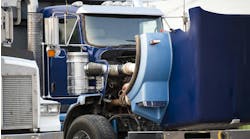Many fleets wrestle with deciding whether to install camera systems on their vehicles. Today’s advanced driver assistance systems use cameras and sensors to monitor the roadway and area surrounding the truck. The purpose of ADAS, which includes collision mitigation, lane departure warning, and blind spot warning, is to improve safety. Many fleets are investing in ADAS, and it’s something every fleet should consider.
In addition, some fleets are spec’ing forward-facing and inward-facing cab cameras, which tend to be more controversial than the sensors that are part of ADAS. The presence of cameras, especially those that face inward, can make drivers uncomfortable and feel like their privacy is being invaded.
Whether installing ADAS, a forward-facing camera, or a driver-facing camera, it is important to prepare drivers in advance to ensure they understand exactly how the cameras work. In most cases, cameras do not continually record; instead, they are triggered by a certain event or an alert from ADAS.
For example, if a car cuts too close in front of a truck, forcing the driver to brake hard, the camera will record the incident. This can be useful if the truck does not stop in time and there is an accident. Having the camera footage can show that the driver of the passenger car, not the truck driver, was at fault. When you have proof that your driver operated the vehicle safely, it is a big plus in these days of nuclear verdicts, which can exceed $10 million in damages.
See also: ATRI identifies ways carriers can improve driver-facing camera approval
In addition to preparing drivers for camera installation, you need to let them know that you will not be using data from the cameras in a punitive way. The best way to use the data is as a driver coaching aid. You can use it along with telematics data as a starting point for discussing with your drivers what they are doing right and areas that need improvement.
Having actual data on driver behavior should make the discussions easier, especially if you are clear that the goal is to improve safety for the driver and other drivers on the road. You can also use the data to reward drivers for safe driving. Here’s a tip: When acknowledging and rewarding your safest drivers, do it publicly. This reinforces your commitment to safety and can inspire other drivers to achieve safety milestones.
Cameras in trucks can help improve driver behavior and overall fleet safety. The way you introduce them into the fleet and how you use the data they generate will influence drivers’ reactions to them and, ultimately, how safe your drivers are on the road.



